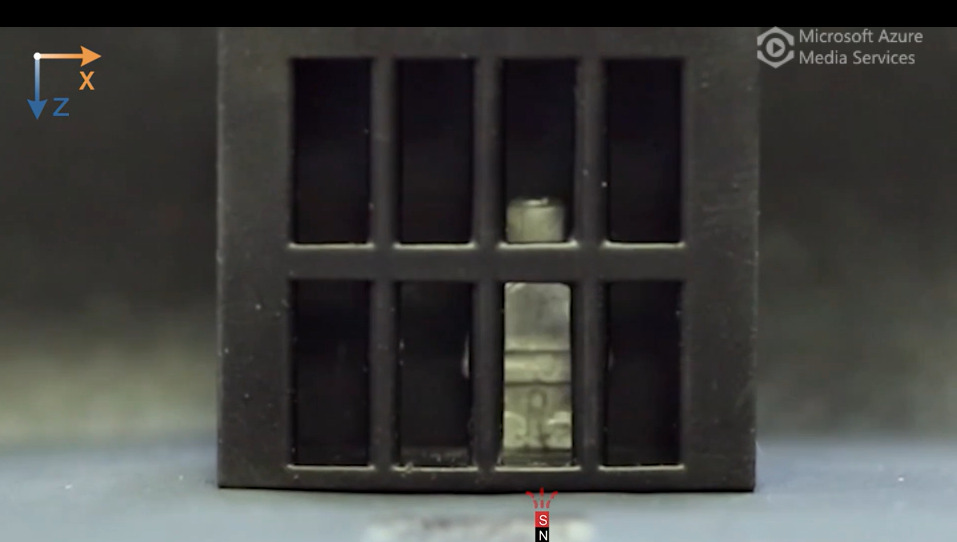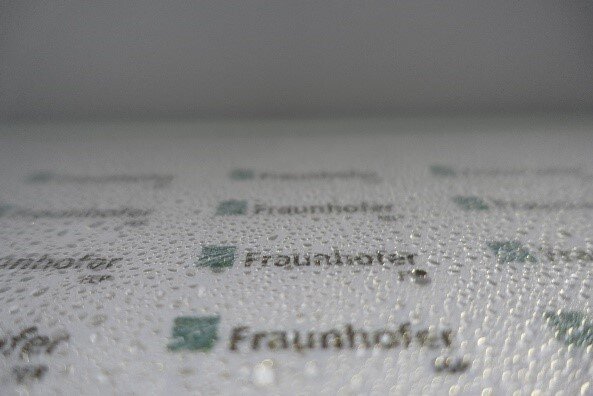
This is a video of a person-shaped robot liquifying to escape from a cage after which it is extracted and remolded back into its original shape.
CREDIT: Wang and Pan et al.
Inspired by sea cucumbers, engineers have designed miniature robots that rapidly and reversibly shift between liquid and solid states. On top of being able to shape-shift, the robots are magnetic and can conduct electricity. The researchers put the robots through an obstacle course of mobility and shape-morphing tests in a study publishing January 25 in the journal Matter.
Where traditional robots are hard-bodied and stiff, “soft” robots have the opposite problem; they are flexible but weak, and their movements are difficult to control. “Giving robots the ability to switch between liquid and solid states endows them with more functionality,” says Chengfeng Pan (@ChengfengPan), an engineer at The Chinese University of Hong Kong who led the study.
The team created the new phase-shifting material—dubbed a “magnetoactive solid-liquid phase transitional machine”—by embedding magnetic particles in gallium, a metal with a very low melting point (29.8 °C).
“The magnetic particles here have two roles,” says senior author and mechanical engineer Carmel Majidi (@SoftMachinesLab) of Carnegie Mellon University. “One is that they make the material responsive to an alternating magnetic field, so you can, through induction, heat up the material and cause the phase change. But the magnetic particles also give the robots mobility and the ability to move in response to the magnetic field.”
This is in contrast to existing phase-shifting materials that rely on heat guns, electrical currents, or other external heat sources to induce solid-to-liquid transformation. The new material also boasts an extremely fluid liquid phase compared to other phase-changing materials, whose “liquid” phases are considerably more viscous.
Before exploring potential applications, the team tested the material’s mobility and strength in a variety of contexts. With the aid of a magnetic field, the robots jumped over moats, climbed walls, and even split in half to cooperatively move other objects around before coalescing back together. In one video, a robot shaped like a person liquifies to ooze through a grid after which it is extracted and remolded back into its original shape.
“Now, we’re pushing this material system in more practical ways to solve some very specific medical and engineering problems,” says Pan.
On the biomedical side, the team used the robots to remove a foreign object from a model stomach and to deliver drugs on-demand into the same stomach. They also demonstrate how the material could work as smart soldering robots for wireless circuit assembly and repair (by oozing into hard-to-reach circuits and acting as both solder and conductor) and as a universal mechanical “screw” for assembling parts in hard-to-reach spaces (by melting into the threaded screw socket and then solidifying; no actual screwing required.)
“Future work should further explore how these robots could be used within a biomedical context,” says Majidi. “What we’re showing are just one-off demonstrations, proofs of concept, but much more study will be required to delve into how this could actually be used for drug delivery or for removing foreign objects.”
Original Article: Watch this person-shaped robot liquify and escape jail, all with the power of magnets
More from: Chinese University of Hong Kong | Carnegie Mellon University
The Latest Updates from Bing News
Go deeper with Bing News on:
Miniature robots
- Lowcountry STEM students build robots, confidence thanks to nonprofit
A group of Lowcountry students are looking to become the next generation of leaders in STEM: science, technology, engineering and math.
- A Booth Visit with Yaskawa at Automate 2024: Two Vision System Applications
The robot distinguishes between objects (in this case, miniature toy robots) that have a very small difference and are programmed to be placed face up and face down. The robot meticulously selected ...
- Swarms of Miniature Robots Clean Up Microplastics and Microbes, Simultaneously
Microscale robots that mimic natural swarms, like schools of fish, have been designed to capture microplastics and bacteria from water.
- China just sent a secret mini-rover to the far side of the moon on its Chang'e 6 sample-return probe
A tiny, previously undisclosed lunar rover has been spotted strapped to the side of China's moon-bound Chang'e 6 lander in newly released pre-launch photos. The true purpose of the rover, which is ...
- Swarm of tiny snail robots stick together to form new structures
Researchers have built a swarm of miniature, snail-inspired robots, minus all the mucus. Instead, a retractable suction cup works in tandem with the remote-controlled machine’s tank-like treads to ...
Go deeper with Bing News on:
Magnetoactive solid-liquid phase transitional machine
- Solid-phase synthesis articles from across Nature Portfolio
Solid-phase synthesis is the synthesis of chemical compounds whereby the reactant molecule is chemically bound to an insoluble material and reagents are added in the solution-phase. Excess ...
- phase change
Humans are not creatures well suited to cold environments. Without a large amount of effort to provide clothing, homes, and food to areas with substantial winters, very few of us would survive.
- Pradip Bakshi
"Molecular Dynamics Studies of Solid–Liquid Phase Transition in 2-D Yukawa Systems" (with P. Hartmann, Z. Donko, G. Kalman, and S. Kyrkos ), IEEE Trans. Plasma Sci. 35 (2), 332 (2007).
- Chemistry Department Faculty
After over a decade and half in theoretical physical chemistry and chemical physics of disordered systems, particularly supercooled liquids, quasi-crystals, glass, solid-liquid phase transition, much ...
- Lesson 1.3 - Dissolving and Back Again
Dissolving a solid in a liquid depends on the interactions and attractions between the molecules of the liquid (solvent) and the particles of the solid (solute). Dissolving happens when the attraction ...









